For more details about the Floating Village Service Expedition, please visit our Cambodia program page.
The people in the floating village of Prek Toal have some of the same conveniences you see in any other town. They have delivery service for groceries, though it comes via boat. They have a school, a restaurant, a medical clinic, and a temple.
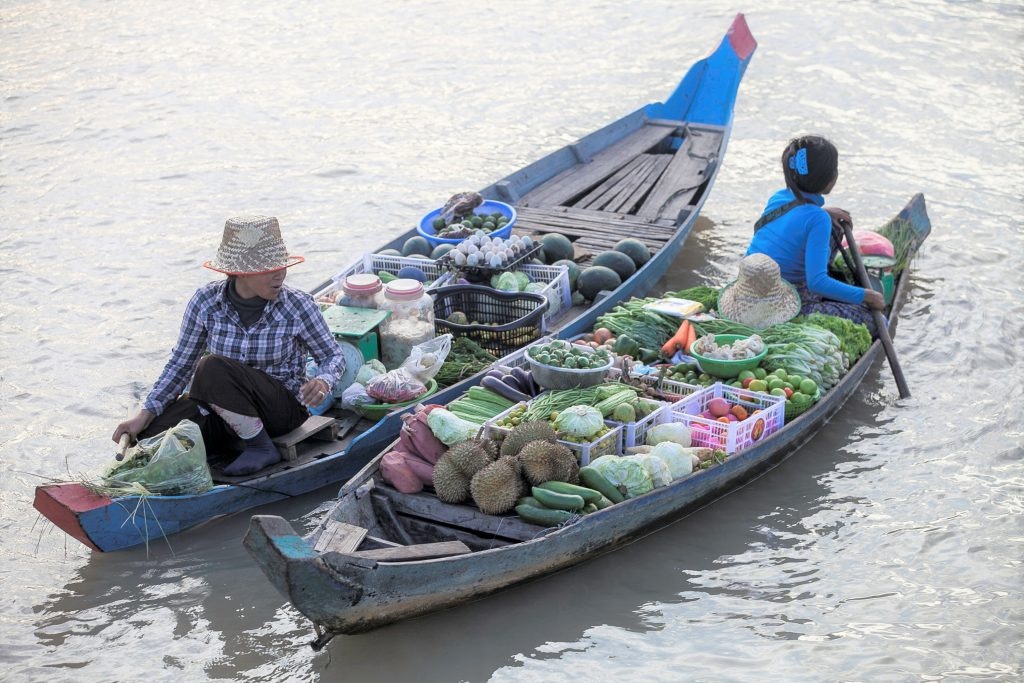
Boats are used to transport food in the floating villages of Cambodia. Copyright: © 2014 Rustic Pathways
Despite this, the Floating Villages of Cambodia is unlike most places on earth. During the rainy season, there is no ground to stand on. The villagers cannot farm or go out for a jog. They are masters at fishing and building structures in difficult circumstances, and they have a deep sense of community.
Many Rustic Pathways students over the years have come to appreciate their unique way of life during the Floating Village Service program. This includes Julia who traveled with Rustic to Cambodia back in 2013.
“Cambodia is one of the most interesting and beautiful places I’ve ever been to,” Julia said. “The best part about my trip was getting to stay in the floating villages on a boat. The way of life in this village is drastically different than anything I’ve ever seen before.”
The Rustic Pathways Foundation has been offering assistance to this region for many years. Country Director Pannha En says the villagers built a new school by using monetary aid provided by student fundraising campaigns that were launched before the pandemic.
Learn More About Fundraising for a Summer Program Abroad for High School Students
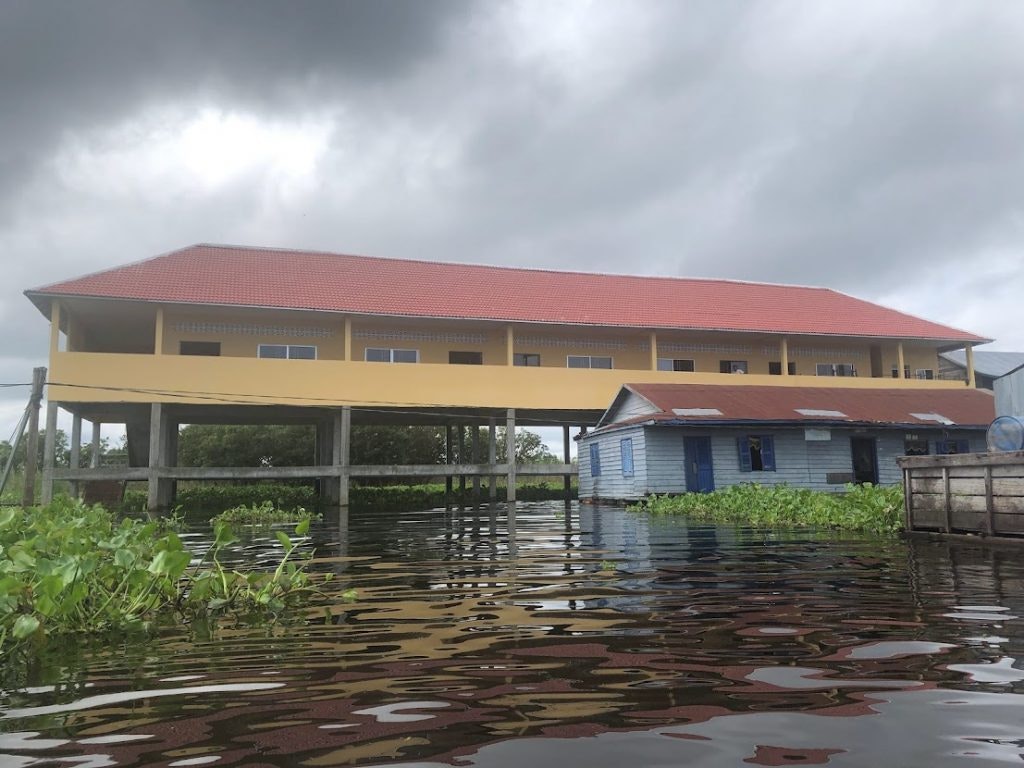
Student fundraising campaigns help build this school in Cambodia.
“It was a hard job,” Pannha said. “I’m really happy the students could help families in need.”
Pannha says the students will now be able to provide more hands-on assistance. In the summer of 2023 they’ll work on the construction of floating houses during their service time.
The villagers will make platform foundations during the dry season. Then the students will help complete work on the walls and interior structures. When they’re done, the students and local villagers will join in a blessing ceremony for the new home.
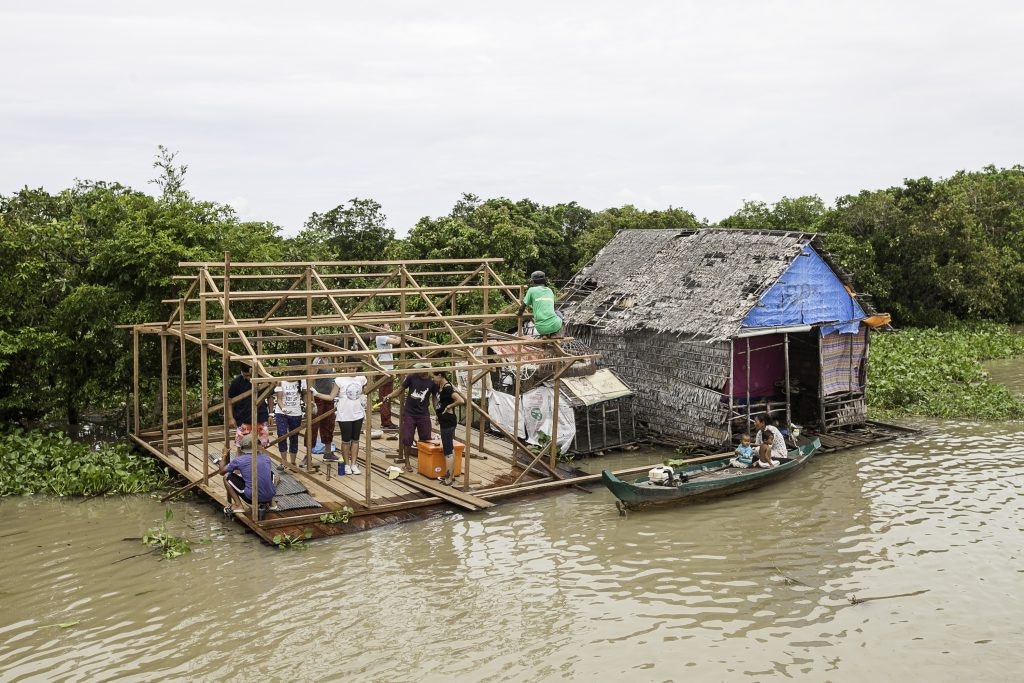
Copyright: © 2014 Rustic Pathways
When the students aren’t working, they’ll get to know their host families in their homestays. These families have faced many challenges. Dam building along southeast Asia’s longest river has caused tremendous environmental issues. Lower water levels threaten the families’ main livelihood, which is fishing.
The villagers have responded by altering their fishing practices to survive. Over the years, they’ve learned to be inventive as they’ve faced many threats. Before the students reach the floating village, they’ll learn about the greatest one. Students will see the spots where some of the country’s worst moments unfolded during the genocide in the 1970s.
History Brought to Life
The brutality of dictator Pol Pot and his Khmer Rouge forces still haunts Cambodia more than 40 years after Vietnamese forces toppled the regime. In September 2022 an international tribunal ended its work after denying the appeal of one of the last surviving leaders of the Khmer Rouge. Over the years, the tribunal only convicted three men.
During the Floating Village program the students learn about the genocide and visit the killing fields where mass executions occurred. Pol Pot wanted to create an agrarian socialist society. In this classless world, people in the urban areas were forced to move to the countryside and work on collective farms to promote self-sufficiency.
The regime used violence against scores of people it deemed a threat to its power. This included those who were educated, along with many ethnic groups and religious minorities. Among those killed were doctors and people who spoke other languages. It’s estimated that 1.5 to 2 million people were executed. Pannha says nearly every family lost loved ones.
“Afterwards, we understood that we are restarting from ground zero – from nothing. During the genocide we lost so much,” Pannha said.
Over the years the country has made great progress in restoring education and other infrastructure. Pannha says schooling to grade 9 is now mandatory, and Rustic students will see how their work has helped make that possible.
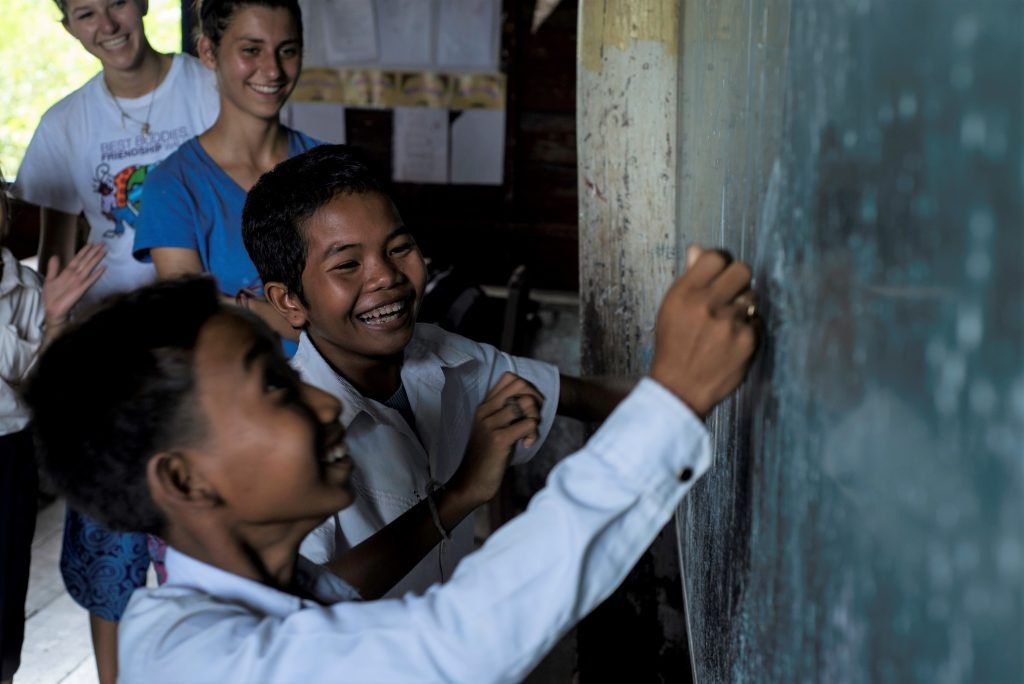
Rustic Pathways students spend time with Cambodian school children. Copyright: © 2014 Rustic Pathways
In Prek Toal students who want to continue their education beyond grade 9 move to another town. Pannha says there are NGOs and sponsors that provide food and a public school dormitory for teens.
“My generation born after the Khmer Rouge was able to go to school,” Pannha said. “Now education is much better. Generally anyone 40 and younger was able to get an education.”
Rustic students also will see how the country has handled transportation issues. The Khmer Rouge destroyed miles of railroad tracks and then in the 1980s guerrilla warfare made using the remaining trains unsafe.
Students will visit Battambang where they’ll see the innovative solution. They’ll ride one of the small bamboo train platforms that were built by the survivors of the Khmer Rouge. Rachel Bodner, who traveled to Cambodia with Rustic in 2017, says these kinds of moments stayed with her when she went home.
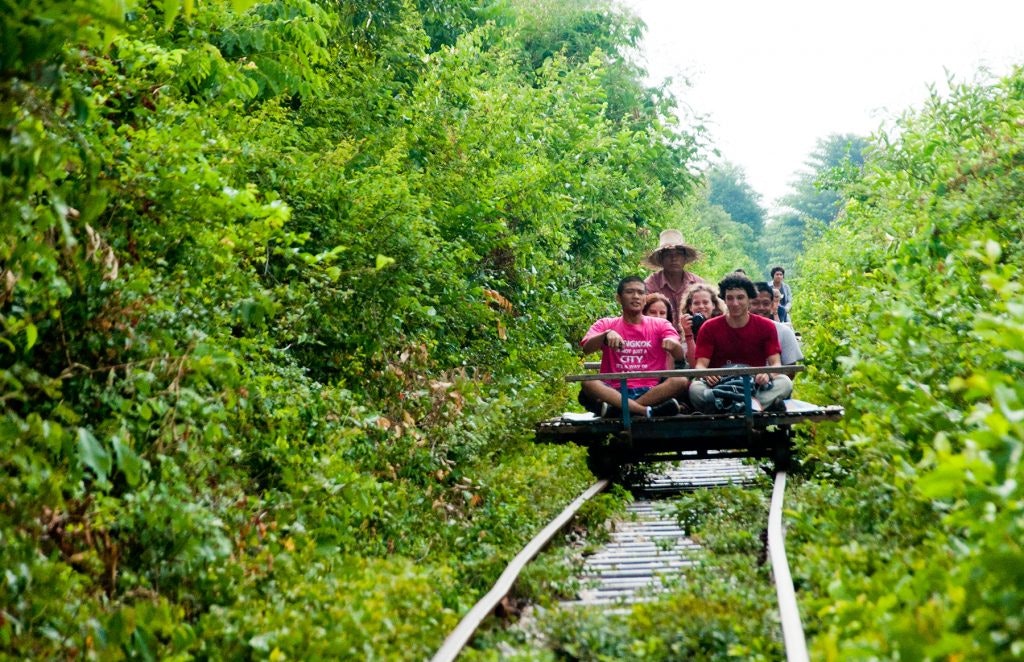
Students ride a bamboo train in Cambodia.
“The program impacted me more than I ever could’ve expected. Everything at home reminds me of Cambodia and how blessed I am to live the way I do,” Bodner said.
Cultural Treasures
Students can reflect on these lessons when they visit perhaps the most famous site in Cambodia. At the end of the program the students travel to Angkor Wat, which is the largest religious complex in the world. Pannha says they learn about the history of the Hindu-Buddhist complex and can do an offering or a prayer if they’d like.
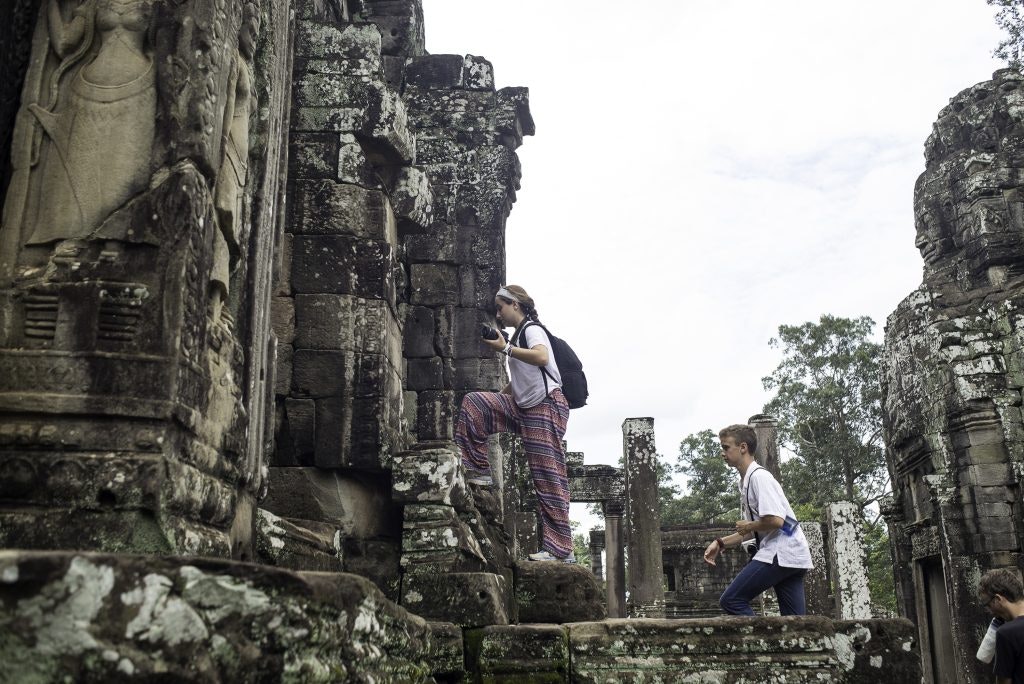
Copyright: © 2014 Rustic Pathways
The temple is one of the most important pilgrimage sites for Buddhists and appears on the country’s national flag. At this site and others, students will be taught cultural norms so they show the proper level of respect. Matthew Yan appreciated this when he traveled with the program in 2018.
“I really loved how the program leaders made a deliberate effort to introduce the significance of Cambodian cultural norms, so we would always be mindful of how to act or present ourselves in public,” Matthew said. “For me, this made the trip all the more special. It gave me a chance to really step out of the bubble we often enclose ourselves in by living in the U.S. It gave me a glimpse into how others live and the importance of respecting and appreciating the differences among others.”
Like Matthew, Nicole Ryeom says it was the interactions with the people that made the deepest impact on her when she traveled on the program in 2017. She has fond memories of the time she spent with all the people she met while in Cambodia.
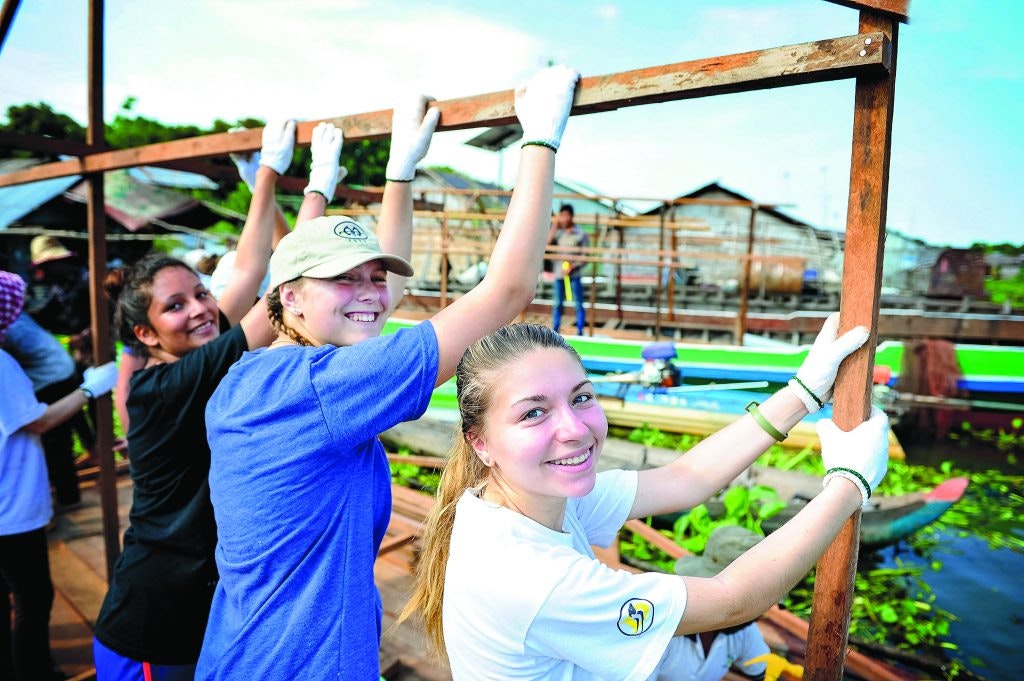
Rustic Pathways students work together on a building project in the floating village.
“It completely changed my life. My leaders, friends, and activities were all amazing,” Nicole said. “Every day we woke up and got to experience something new and amazing with new and amazing people.”
Want to read more about Cambodia? The most common Cambodia FAQs are answered here!
